Spring 2022
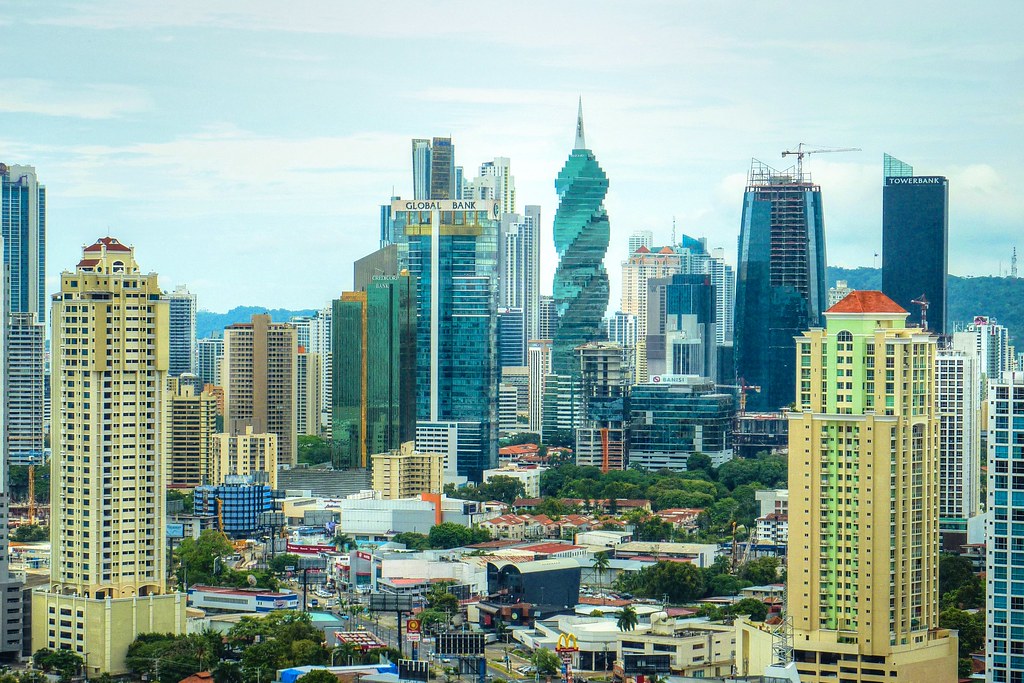
“HDR of Panama City, Panama” by Matthew Straubmuller is licensed under CC BY 2.0.
Although the recent surge of the Omicron variant impacted many areas of life in Mexico and Central America, many governments in the region have begun to easen their COVID-19 policies as cases have lowered. Looking at governance and rule of law, one of the major trends for the region is promoting vaccine administration. This has been made possible by the regional vaccine efforts of countries like Mexico alongside PAHO giving out vaccines to other countries in Central America. In terms of vaccine administration, there has generally been a major push to a) encourage people to get their booster dose and b) vaccinate children. However, there are some exceptions to this; for example, Mexico is limiting their vaccine to only those above the age of 15 or younger children with underlying conditions. Beyond this, there has been a recurring trend of a lack of government transparency in the subregion, specifically with the Ortega regime in Nicaragua. Because of this, the affected populations are not only kept in the dark on the severity of the pandemic, but it is also difficult to get accurate COVID data from those countries. Shifting over to growth and innovation, one major trend is the reopening of the tourism industry. The majority of countries in the subregion have lifted travel restrictions and have begun to see an increase in the number of tourists. This is extremely important as it relates to economic growth, as Mexico and most other Central American countries are seeing extremely high rates of inflation and remittances. If a drop in COVID-19 cases can be sustained, there is hope for an economic recovery. In relation to the cases from the Omicron variant, another regional initiative has been increasing the number of testing opportunities available to the population, specifically rapid tests because of their convenience. Finally, in the social and cultural inclusion section, with the increase in the number of cases there have been some changes to schooling and other activities for children. While the push for vaccinating children means that in-person education has returned to most of the subregion, the increase in cases has impacted many teachers and school workers, making in-person learning extremely difficult. Moreover, another important trend is the rural/urban divide as it relates to vaccine distribution and testing abilities. To combat this inherent disparity, many governments have funded specific programs that develop testing and vaccination opportunities in these areas. Finally, migration has also had an important impact on the pandemic. Because of the large number of migrants moving throughout the subregion, specifically from Honduras and Nicaragua, it has been hard to monitor cases and provide testing and healthcare services to these vulnerable groups.
Jump to key trends for each rubric:
Key trends for Governance and the Rule of Law
Countries in the subregion have continued to rely upon regional distribution mechanisms to promote greater vaccine access in their respective territories, specifically amongst children and for booster doses. At the same time, a lack of government transparency makes promoting these vaccination efforts extremely difficult.
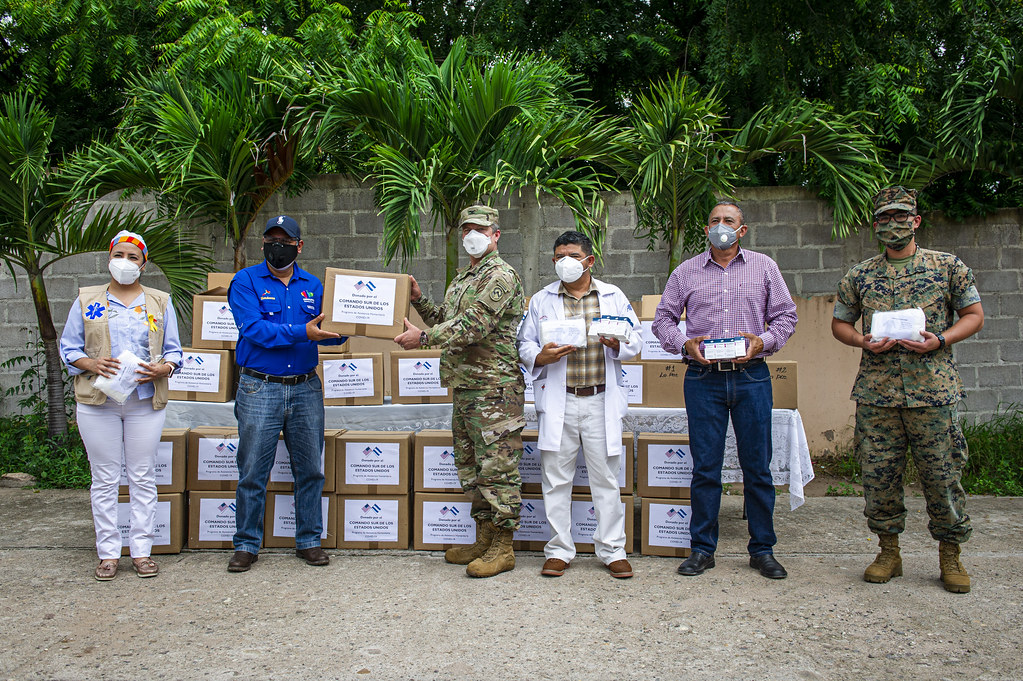
Regional Vaccine Distribution
Subregional cooperation has arisen as countries seek to vaccinate their populations. In its role as pro tempore president of CELAC, Mexico alone donated over 1.1 million AstraZeneca vaccine doses to countries like El Salvador, Guatemala and Honduras. This has been particularly important as no countries in the subregion have been able to produce a homegrown vaccine. The involvement of Asian countries in vaccine distribution in Central America has been notable, as the Japanese government has donated refrigeration equipment to Guatemala, and Taiwan and China compete for influence in the region through the financing of lobbying operations for Guatemala, and vaccine donations for El Salvador, respectively. Moreover, PAHO has worked alongside COVAX to distribute vaccines to other countries in Central America like Nicaragua and Panama who had limited supply earlier in 2021 when global vaccine distribution began taking place.
US Marines provide Honduran healthcare workers with PPE. “US Marines, Soldiers provide COVID-19 personal protective gear to Honduras community 200811-M-EH454-0064” by NavyMedicine is licensed under CC PDM 1.0
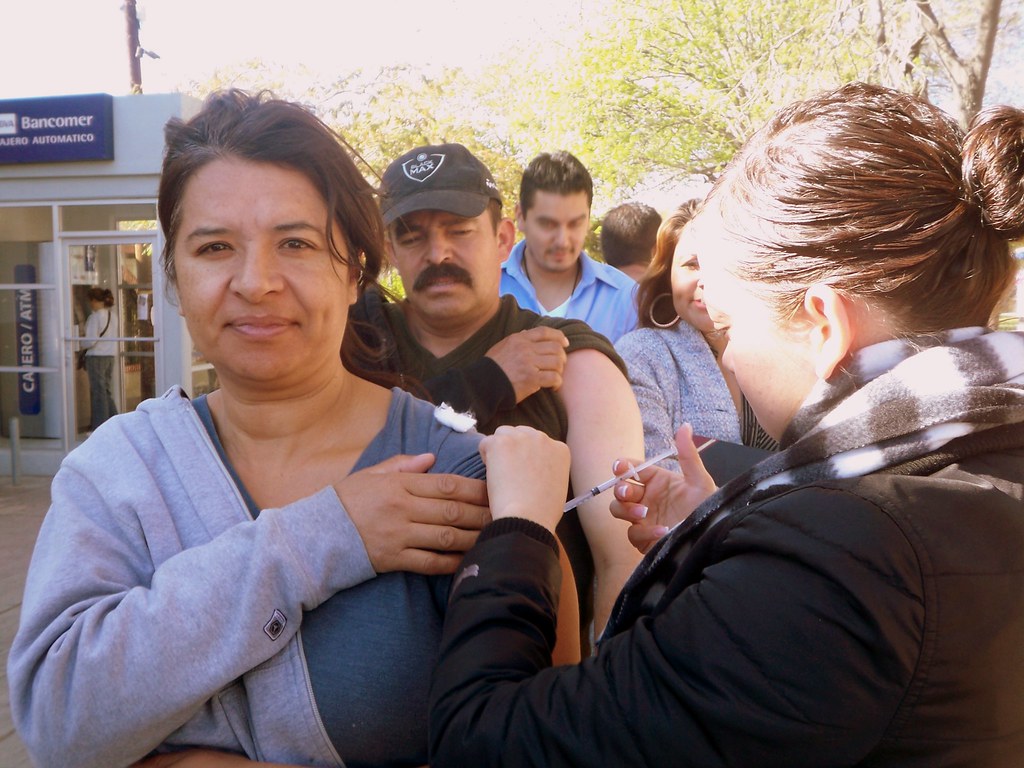
Promoting Vaccine Administration
All countries in the subregion have started distributing booster vaccine shots to different demographic groups. While El Salvador and Guatemala offer a third dose for every adult, Mexico has just expanded booster availability to people over 30 in certain states. Moreover, countries like Panama and Honduras have struggled to promote the booster shot as most efforts have been centered on still getting out the first and second doses. On the other hand, some countries in the subregion like Costa Rica have taken a much stronger stance towards vaccination, who now require all individuals above the age of 5 to get the vaccine barring medical exemptions. Despite criticism from the public, Costa Rica now has one of the highest vaccination rates in the region as over 80% of individuals now have at least one dose of the vaccine. As a result of the high vaccination levels, Costa Rica has discussed rolling back many of their previously enforced sanitary rules like mandatory mask-wearing, curfews, and limiting indoor capacity. Meanwhile, although most countries have started vaccinating children older than 5, Mexico continues to defend its policy to offer vaccines only to people older than 15. State governments have resorted to cooperation with the US and private companies, and parents to using legal resources to vaccinate children not covered by the national vaccine plan.
Receiving the vaccine “Recibiendo la vacuna” by gabofr is licensed under CC BY 2.0
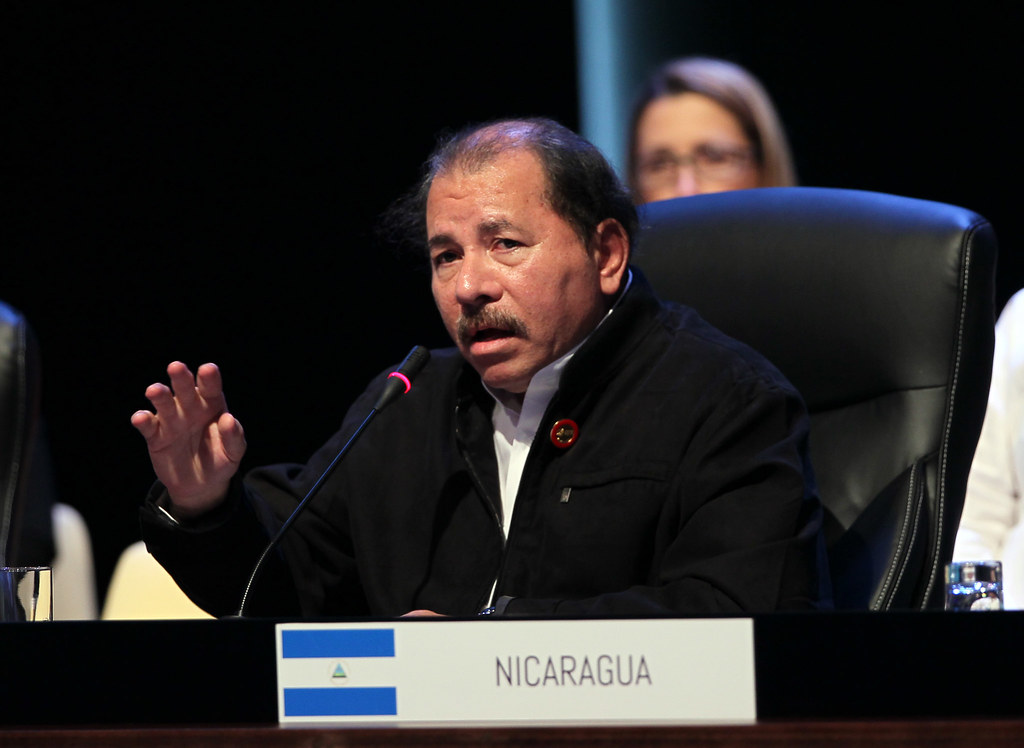
Lack of Government Transparency
Lack of transparency in government administrations throughout the pandemic has been a prominent issue in the region. Several administrations have failed to disclose accurate figures about COVID-19 cases and deaths. Subsequently, these governments have faced challenges regarding their credibility. In particular, the Ortega Administration in Nicaragua has denied the severity of COVID-19 since the beginning of the pandemic, continuing to hold public gatherings without any restrictions in place and denouncing lockdowns. Moreover, doctors in the country who attempt to take care of patients infected with COVID-19 have been severely punished, imprisoned, and in some cases even forced to flee the country. Given how many journalists and health experts in the country have been silenced, coupled with the extreme government corruption, it is difficult to gauge the actual status of the pandemic in the country. Even on a lesser scale, the Mexico City government, for example, now faces criticism for distributing Ivermectin to fight COVID based on a now rejected scientific paper. Beyond this, for many governments in the subregion, there has been a shift away from COVID-19 to instead focusing on other domestic and international issues instead. For example, Costa Rica recently held a primary presidential election in early February of 2022, and the majority of candidates centered their campaign platforms around economic growth and recovery rather than the handling of the COVID-19 pandemic.
Daniel Ortega, president of Nicaragua. “Daniel Ortega, presidente de Nicaragua. Foto: Ismael Francisco/ Cubadebate” by Cubadebate is licensed under CC BY-NC-SA 2.0
Key trends for Growth and Innovation
While many of the countries in the subregion are experiencing economic downturn with increased inflation, the reopening of the tourism industry and the increase in remittances received remain promising for repairing their fragile economies. At the same time, with Omicron on the rise, countries are looking to minimize the number of cases by taking initiatives like increasing access to testing.

Recovering Tourism Industries
Over the pandemic, this region suffered a sharp decline in the tourism industries, which resulted in substantial contractions in these countries’ economies. This has contributed to the decrease in gross domestic product and rises in unemployment rates throughout the region. Some countries, like Mexico, only established land travel restrictions, but no vaccine or testing requirements for air travel in an effort to protect this industry. On the other hand, countries who did impose restrictions and requirements, like Guatemala and El Salvador have begun to lift them partially or entirely per the WHO’s recommendations. For example, most Central American countries that have opened their borders to travel do not require a negative COVID test or proof of vaccination to enter. These new health guidelines were expected to aid in reactivating suffering tourism industries. Following the Christmas holiday season, many countries like Costa Rica and Panama saw a major increase in tourism, in some cases the highest numbers had been since before the pandemic.
A strip of hotels in Cancún, Mexico. “Cancun beach aerial – Luftbild” by dronepicr is licensed under CC BY 2.0.
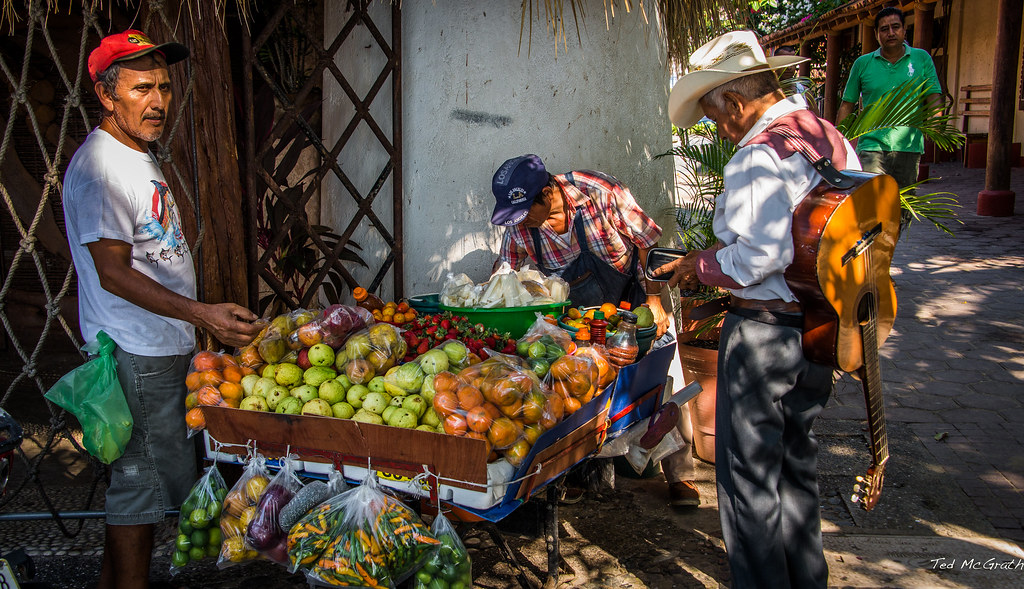
Testing Avialability
In the face of the highly contagious Omicron variant, testing availability has become a key priority to many countries in the region. Most recently, PAHO has led initiatives to increase access to rapid testing in Central American countries, as PCR tests require extra technology, manpower, and training that is not available everywhere. Moreover, there has also been a regional push to provide more at-home tests, as expanding the number of testing sites is not only expensive but also increases the risk of exposure of the Omicron variant. However, they have not been entirely successful. While Guatemala and El Salvador have increased their testing sites and capabilities, as well as expanded them further into rural areas, there are multiple complaints from citizens and specialists who cannot acquire tests or get timely results. Moreover, although most countries in the subregion like Honduras and Costa Rica have been acquiring more rapid antigen tests, the Mexican government has openly discouraged its population from seeking rapid tests, and instead suggested people assume they have COVID-19 and isolate when symptoms appear.
COVID Test. “Pruebas COVID Biblioteca (8 of 52)” by ministerioculturaypatrimonio is licensed under CC PDM 1.0
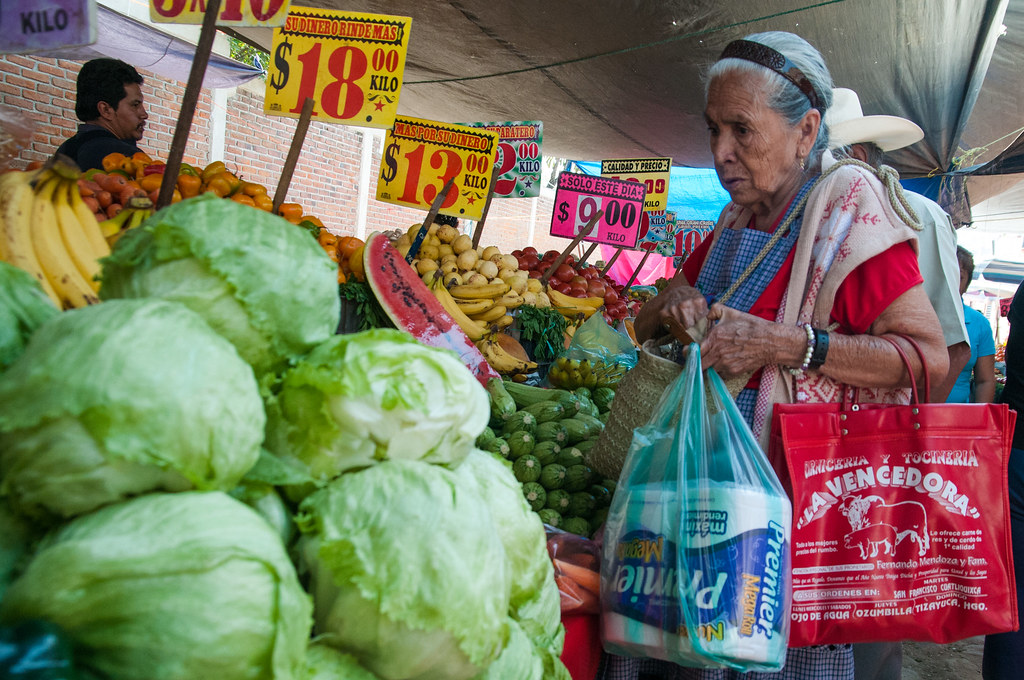
Inflation and Remittances
The Mexican and Central American economies are still suffering the negative effects of two years of the COVID-19 pandemic, and the work absenteeism, unemployment, and shutdowns it has caused. Aside from Mexico, a lot of the economic downturn seen throughout Central American countries can be attributed to the shutdown of the tourism industry because of COVID-19, which prior to the pandemic typically consumes a large sector of the economy. Record levels of inflation have been observed in Mexico and Guatemala, which at 7.36% and 6.12% respectively, reached their highest level in 20 years, with household items and food suffering significant price increases. Other countries like Costa Rica are experiencing record-breaking debt, which has now reached nearly 70% of the country’s GDP. Remittances, however, have reached record numbers alongside inflation, increasing between 26.8%-34% over 2021.
Rising Prices. “Carestía alimentaria” by Eneas is licensed under CC BY 2.0
Key trends for Social and Cultural Inclusion
Central American countries face a variety of social challenges in this new stage of the pandemic, like promoting vaccination in rural areas and for children. Moreover, migrating populations in the subregion have made monitoring the pandemic and providing treatment for all difficult.
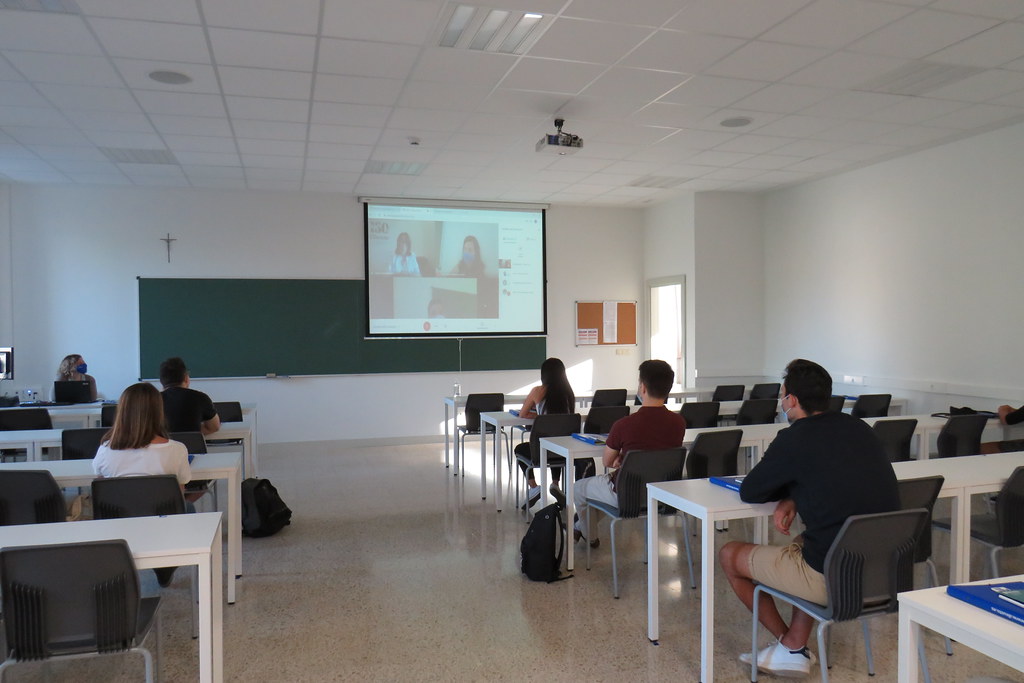
Children and COVID
Children’s access to health services and education has become a key issue over the pandemic, where the prospect of remote school amplified by significant gaps in access to information technologies has created serious concerns about education and developmental lags. Schools across the region have restarted in person activities, or authorized hybrid models to allow for flexibility as Omicron cases rise. In Mexico, for example, schools in 27 out of 32 states have started 2022 with in person classes, but the federal government’s refusal to vaccinate children under 15 without underlying conditions makes schools potential super-spreaders. Similarly, Costa Rica has reopened all schools back for in-person education after becoming the first country to require the vaccine for everyone above the age of 5 years. Nevertheless, a return to in-person education has come with many challenges. In particular, with the spread of the Omicron countries, many countries in Central America like Panama have reported having to shut down schools because of the number of teachers and school staff who have been testing positive for COVID-19.
Hybrid Education. “Jornada de Acogida de estudiantes de 1º curso de la Facultad de Derecho” by deusto is licensed under CC BY-NC-SA 2.0
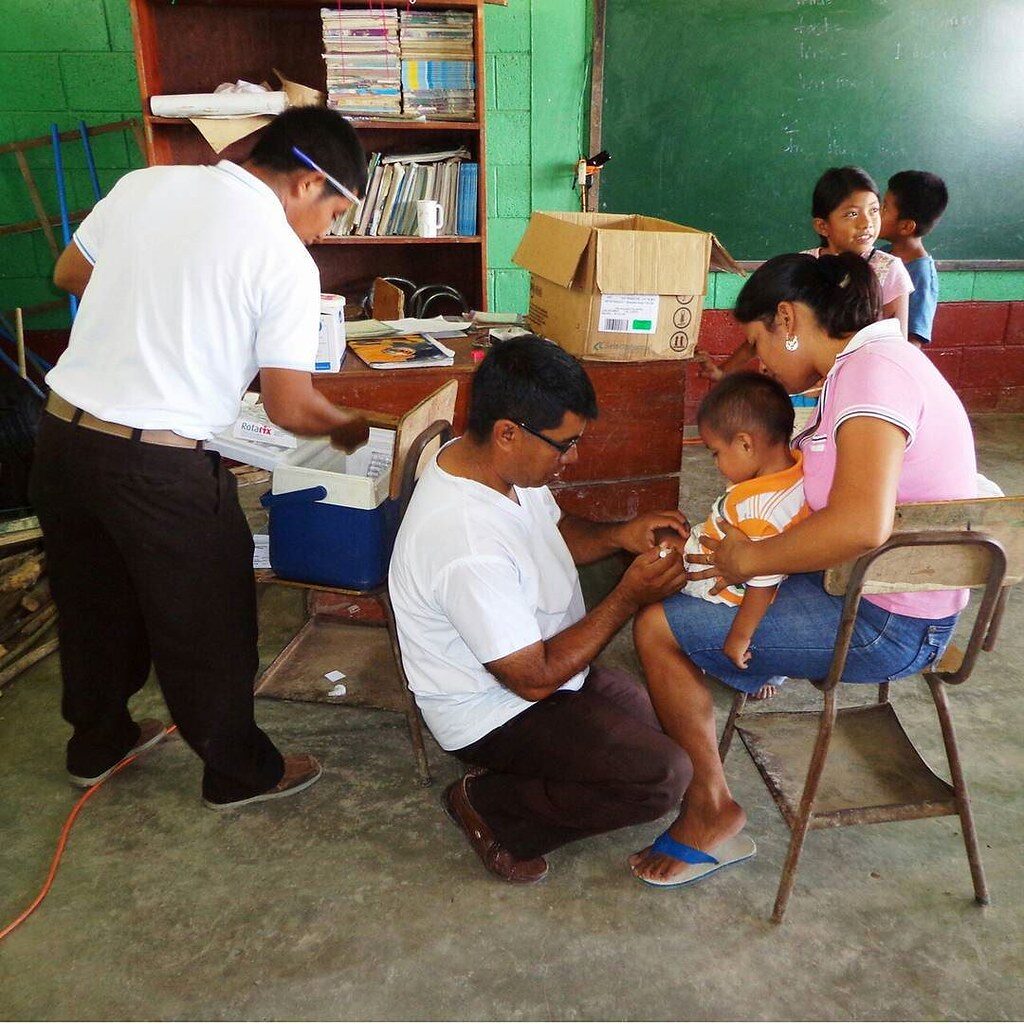
Rural/Urban Divide in Vaccine Distribution
Addressing the rural/urban divide in an effort to distribute vaccines equitably has been a challenge for Mexico and Central America. Healthcare systems across the region have struggled to deliver vaccines to disperse rural communities at the same pace as urban areas, a fact reflected in the lower vaccination levels in more rural states in Mexico, for example. National governments, however, have designed tailored programs to reach more isolated areas, and periodically intensify their vaccination options in these areas, as is the case with Guatemala. Other countries like Costa Rica have also funded specific programs aimed at creating testing and vaccination centers. In particular, one struggle governments have faced in increasing operations in rural areas is the language barrier, which is why countries like Panama have hired translators who speak indigenous languages to work at the rural testing and vaccination centers.
Childhood vaccination event in San Francisco Mollejón, Guatemala. “Jornada de vacunación infantil en San Francisco Mollejón, Guatemala. La falta de recursos, el desconocimiento y la distancia al centro de salud hacen desistir a la población de zonas rurales de hacerse revisiones médicas cuando lo necesita. Gracias al com” by Global Humanitaria is licensed under CC BY-NC 2.0
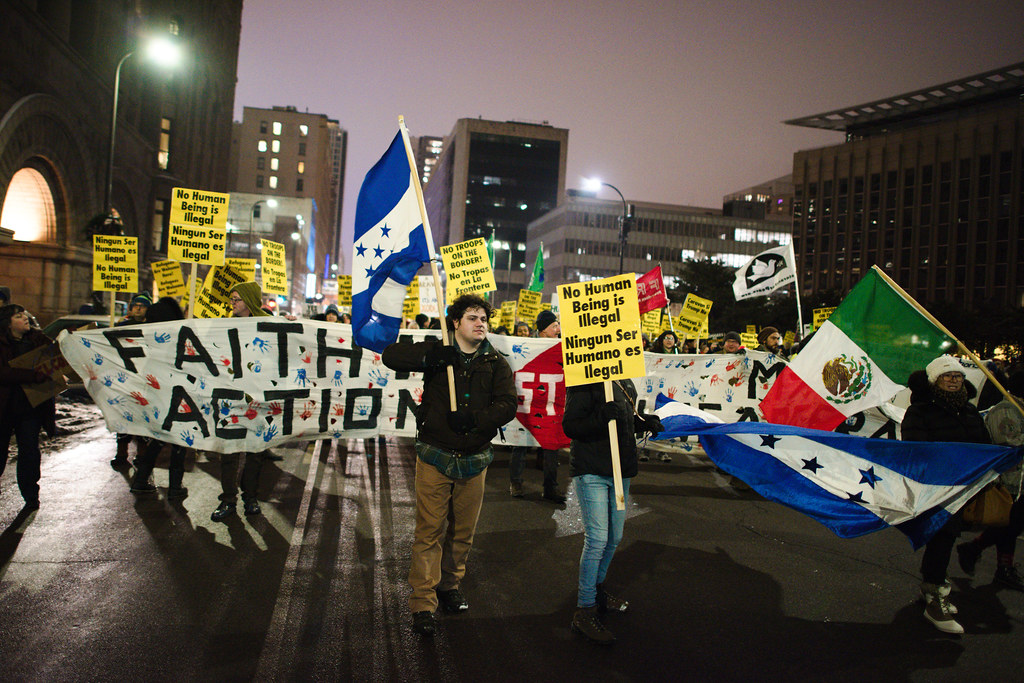
Migration
Migration continues to be a major issue in Central America, with significant population movements out of Nicaragua and Honduras. For example, in 2021 alone, Costa Rica received 53,000 Nicaraguan refugee applications seeking asylum in the country. Moreover, recent reports cite hundreds of Hondurans traveling through the subregion to get to the U.S. border. Because of this growing population movement, in many cases it has been difficult to track the number of COVID cases per country. Additionally, it has proven challenging to provide access to health care as well as COVID testing to migrants who are traveling between countries. In many cases, migrants do not know they have COVID, let alone have the option to isolate if symptoms come up. Thus, many government steps have been taken to address this growing issue. For example, Guatemala has worked in partnership with the Turkish government and the Council of Ministers of Health of Central America (COMISCA) in order to provide the immigrant population traveling to southern Mexico with better access to health resources.
Protest in favor of Central American Immigrants. “March to welcome Honduran refugees and protest against troops on the border” by Fibonacci Blue is licensed under CC BY 2.0
What to Watch:
First and foremost, it is extremely important to look at who is in the government when following how this pandemic will continue to be handled. Many countries in Central America are currently going through periods of governmental change, for example with Honduras recently inaugurating President Xiomara Castro and Costa Rica holding their second round of elections for the president and deputies of the Legislative Assembly on April 3, 2022. While there has been a lack of transparency in many Central American governments’ plans for responding to the pandemic, this could potentially change for at least some countries as the shift in administrations continue. One of the most pressing issues to many countries in the subregion is the ongoing economic crisis. Because more countries have eased COVID-19 restrictions for international travelers, it will be interesting to see if a growth in tourism can help bolster these countries’ economies, especially as it gets into the warmer spring and summer seasons. Looking forward, monitoring the inflation and remittance levels will be extremely important. Aside from this, it is also a good idea to look at what is continuing to develop on the scientific and technological end as the spread of Omicron continues to decrease. PAHO alongside Mexico and other Central American countries are continuing to develop technology that will be able to detect future variants of COVID-19 that will hopefully make it easier to take preemptive action. As the number of cases from the variant begins to settle down, it will also be interesting to monitor the feasibility of in-person education and work. This, of course, will be dependent on whether Mexico and Central American countries can increase their child vaccination rates as well as the number of booster shots administered. Focusing in on the social element of the pandemic, one of the most important areas to focus on is migration patterns, as the number of people fleeing Nicaragua continues to increase. It is clear that long-term solutions will need to be developed to address these growing migration numbers.
Summer 2021
The effects of the Covid-19 pandemic have been felt in Mexico and Central America for over 16 months now. It is no longer a novelty, but a fact of life that acts as a backdrop to the social, political and economic issues that exist in the region, exacerbating them at times. Adaptation, responses and recovery from the pandemic have not been uniform in the region whatsoever. While countries like Costa Rica and El Salvador seem to have their official reported case numbers under control, countries like Mexico, Guatemala and Honduras are currently battling a third wave of cases, whose effects have been increased due to the summer vacation period of 2021. Similarly, there is no homogeneity in regards to vaccine acquisition and distribution, since countries like El Salvador have had earlier access while Nicaragua lags behind.
Vaccine distribution in this subregion has not only been revealing of the efficiency of national response plans, but of the effects and importance of diplomacy and engagement on the world stage. While the United State was initially reluctant to export vaccine doses, China, Russia, and India took this opportunity to expand their “soft power” in Latin America through vaccine donations, gaining legitimacy with the US’s closest neighbors. Now that the US has started actively engaging in global vaccine diplomacy, its vaccine doses come more frequently, but accompanied by the unspoken promise of working towards ending irregular and undocumented migration from Mexico and Central America into the United States. This has been especially evident during Vice President Harris’s visit to Guatemala and Mexico in early June, as well as the multiple sanctions that the US department of State has rolled out against Central American public servants who have engaged in acts of corruption, one of the main drivers of migration.
The pandemic has also accelerated a worrying trend in the region: the growth of criticism and discrediting of the press coming from each national government. Such has been in the case in Mexico, where President AMLO personally calls out journalists and newspapers who criticise him, in Nicaragua, where opposition candidates and journalists have been jailed, and El Salvador, where unexplained audits against dissident newspapers take place regularly.
Some positive trends have also developed, like the historic amount of remittances sent into the region during the first half of 2021, as well as a growing tendency to search for checks and balances in Mexico, as evidenced by the June 6th election.
- While every country in the region has started its inoculation campaign to vaccinate the entirety of its population, they have all done so to widely varying degrees of success.While countries like Costa Rica, El Salvador, Mexico and Panama have given at least one dose to 32.1-38.9% of their population, countries like Nicaragua, Guatemala and Honduras are lagging behind, having distributed at least one dose to only 3.8%-14.2% of the population.
- The COVID-19 pandemic has created opportunities for subregional fraternity and cooperation to develop, without ruling out the possibility of it being politically motivated. El Salvador’s president Nayib Bukele sent 34,000 vaccine doses to Honduras, dealing directly with local governments rather than his Honduran counterpart. Similarly, Mexico has donated a total of 450,000 vaccine doses to Guatemala, Honduras, and El Salvador.
- Due to the slow nature of the vaccine rollout throughout the region, wealthy citizens with access to a US visa, especially from northern Mexican states, Honduras, and Guatemala have traveled to Texas, Florida, Arizona and Louisiana to receive the COVID-19 vaccine, practicing what is now called “vaccine tourism.” This further widens the social and economic gap in one of the most unequal regions in the world.
- The region is as divided in regards to new case numbers as it is in the success of vaccine distribution. While Costa Rica and El Salvador have shown a significant downward trend in new daily cases, countries like Mexico, Guatemala and Honduras are in the midst of a third COVID-19 wave, achieving new records in case numbers. Panama will also experience a third wave, but it is expected to be less intense than the first two.
- An initial denial by the US government to “share” vaccine doses with Latin American countries led China, Russia and to an extent India to fill the leadership vacuum by providing Mexico and Central American countries with millions of vaccine doses. The term “vaccine diplomacy” has been used to describe these countries’ efforts to use the vaccine to increase their influence and gain legitimacy in Latin America.
- China’s expansion of the “Health Silk Road” through the distribution of vaccines is contingent upon certain political actions performed by Central American governments. While El Salvador and Panama, who recently cut ties with Taiwan, were among the first recipients of Chinese vaccines, Honduras has said it feels pressured to do the same and is considering opening a trade office with China. Guatemala and Nicaragua, who continue to be allies with Taiwan have the lowest vaccination rates in this subregion. Panama has not accepted Chinese vaccines either.
- While the Guatemalan Government signed a contract with Russia to purchase 8 million doses of the Sputnik V vaccine, only 550,000 have been delivered. Guatemalan officials have expressed interest in renegotiating and cancelling the contract if the doses are not delivered in time to distribute the second round of doses.
- Three months after China and Russia began their diplomatic distribution of the vaccine in Mexico and Central America, the United States has announced it will give 1 million Johnson & Johnson doses and 2.5 million AstraZeneca doses to Mexico, 1.5 million doses of the Moderna vaccine to Honduras and 1.5 million Moderna doses to El Salvador, as well as 500,000 doses of the Pfizer vaccine to Panama and 3 million Moderna vaccines to Guatemala. China has responded by increasing its donations of Sinovac doses to El Salvador by 1.5 million.
- The US’s donations do not come with no strings attached, as doses are distributed while the Biden administration increases pressure on President AMLO to decrease the influx of undocumented immigrants into the US border. Additionally, Mexico is increasing its military presence on its southern border with Guatemala to halt immigrants from Central America, and Honduras and Guatemala will deploy troops with the same purpose.
- US Vicepresident Kamala Harris visited Guatemala and Mexico on June 7-8th in an effort to reiterate the Biden administration’s commitment to attacking the root causes of migration from the Northern Triangle, like corruption, climate change, drug trafficking, violence, and a lack of economic opportunities. She strongly discouraged Central American people from trying to migrate to the United States through irregular means. The US Secretary of State Antony Blinken visited Costa Rica with the purpose of ensuring regional cooperation to manage migration into the US.
- Consistent with this commitment to ending endemic corruption in the Northern Triangle, the United States Department of State has released the Engel List, a report that identifies 14 Salvadoran, 20 Guatemalan and 21 Honduran nationals who have knowingly engaged in acts of significant corruption, have knowingly undermined democratic processes or institutions, or have violated human rights. Among these individuals are former and current members of the Salvadoran presidential cabinet, advisors to the president, members of the Legislative Assembly and Magistrates of the Supreme Electoral Tribunal, as well as former and current members of the Honduran congress, former president Jose Porfirio “Pepe” Lobo Sosa, Rosa Elena Bonilla de Lobo, former first lady, and current and former congressional representatives from Guatemala, judges of the Supreme Court, prominent attorneys, NGO directives, members of the presidential cabinet, and former president Alvaro Colom Caballeros. Ministers and politicians who appear on the list have denounced its legitimacy and expressed rejection of US interference in Central American affairs.
- Over the course of the COVID-19 pandemic, the press has been discredited and threatened throughout the region, both because of their criticism of their respective government’s handling of the pandemic, and because of the independent reporting done on case numbers, which often differs from official data. In the case of El Salvador, the independent news outlet El Faro has been openly criticised by President Bukele, and has been threatened by many of his supporters.
- Similarly, between May and June of 2021, 26 political opponents of the Ortega-Murillo regime in Nicaragua, including journalists, social leaders, and 6 declared presidential candidates of the November 2021 election, have been jailed due to accusations of their supposed involvement with foreign financing and alleged treason. This has prompted intellectuals, journalists, and politicians to flee Nicaragua in fear of being arrested.
- In Mexico, President López Obrador started a new segment of his daily morning press conferences titled “Who’s Who in this Week’s Lies” (Quién es quién en las mentiras de la semana), a supposed fact-checking exercise of news that is in reality presents misleading information to discredit the press and the president’s critics.
- The Guatemalan Attorney General, María Consuelo Porras, fired Juan Francisco Sandoval, the special prosecutor against impunity, after having blocked his investigations for months. This prompted a nationwide strike led by students, professionals, and indigenous groups asking for President Giammattei and Porras’s resignation.
- Remittances have grown steadily in Mexico and Guatemala over the first half of 2021. In Mexico, there has been a 31% percent growth in remittances over the first months of 2021 in comparison to this period in 2020, while in Guatemala they have shown a 4.27% increase in comparison to the same period in 2020.
- On June 6th, 2021, the largest elections in Mexican history, with 21,383 public positions up for dispute, took place. Morena, president AMLO’s party, won 11 out of 15 governorships and 203 seats in the 500 member Chamber of deputies. Alongside PT, PVEM, PES parties, the Morena Coalition will hold 298 seats, meaning that they will lose their “qualified majority” which is necessary to make constitutional changes regarding the National Electoral Institute (INE), the Supreme Court, and the Energy Reform. Thus, the election was widely seen as a referendum for President AMLO’s Fourth Transformation, and the results indicate the strengthening of Mexican checks and balances.
- After heavy rainfall, a quarter of Costa Rica is now under red alert for flooding. At least two deaths have resulted from this natural phenomenon.
Spring 2021
MEXICO & CENTRAL AMERICA SUB-REGIONAL BRIEF
Executive Summary: Mexico and Central America have been greatly impacted by the public disapproval of government responses to the pandemic, economic contractions, and the increased marginalization of certain social groups. Regarding governance and the rule of law, there has been a lack of transparency in the government’s reporting on COVID-19 outbreaks. Specifically, there have been accusations that governments are underreporting the number of cases and deaths as independent organizations and journalists have been compiling independent figures. Additionally, pre-existing allegations of corruption within administrations have been amplified during the pandemic. Certain governments have been accused of mismanaging funds in their response to the pandemic. There have been varying degrees of condemnation from the general public, media, and international organizations resulting in high disapproval rates and public demonstrations. Regarding growth and innovation, the pandemic has disproportionately affected certain economic sectors. Due to travel restrictions and the halt of international flights, tourism has suffered substantially. Furthermore, workers in the informal sector, including the self-employed and street vendors, have faced high rates of unemployment, putting them at greater risk for poverty and food insecurity. However, 2021 has already experienced some economic growth due to the easing of pandemic restrictions generating rebounds in domestic and international economic activity. Lastly, the healthcare systems have been especially negatively impacted by the pandemic. Prior to the pandemic, many of the healthcare systems were already strained. Therefore, the preexisting issues, combined with the lack of PPE and other medical resources in hospitals have caused higher rates of infections among healthcare workers and overall higher death rates. Furthermore, Mexico and Central American countries were delayed in acquiring vaccines, though most are now regularly receiving shipments. Regarding social and cultural inclusion, minority groups have endured exacerbated marginalization. Women have been disproportionately affected by job loss, and gender-based violence has increased significantly due to quarantine orders, resulting in women being stuck at home with their abusers. Moreover, human rights activism has been received with hostility by certain governments. In response to speaking out against governments’ responses to the pandemic, human rights advocates have been subjected to threats of violence and imprisonment in many countries in the region.
Governance and the Rule of Law
Key Statement: Governments in the region have been accused of a lack of transparency in reporting cases as well as corruption in their management of funds. Consequently, they face high levels of disapproval from the public.
Trend #1: Lack of Transparency
Lack of transparency in government administrations throughout the pandemic has been a prominent issue in the region. Several administrations have failed to disclose accurate figures about COVID-19 cases and deaths. Subsequently, these governments have faced challenges regarding their credibility. The misrepresentation of COVID-19 data is especially notable in Mexico, Guatemala, and Nicaragua. All three government administrations have been accused of underreporting cases in an effort to diminish the severity of the crisis. In Mexico and Nicaragua specifically, President López Obrador and President Ortega respectively have refused to impose rigid restrictions, urging citizens to carry on with day-to-day activities as normal. Independent organizations as well as journalists have exposed the inaccuracy of these governments’ reporting by providing more realistic figures of COVID-19 cases. Furthermore, widespread corruption and unfair election practices in the region has amplified distrust during the pandemic, leading to attacks on the lacking credibility of current administrations.
Trend #2: Public Disapproval for Governments
While countries in the region have seen varying degrees of success with their pandemic management policies, policy opposition has been widespread as public approval of federal governments and their pandemic policies continues to decrease. Austere economic plans in Mexico and Costa Rica, clashes among federal and local governments in Panama, tensions between the judiciary and executive branches in El Salvador, increased levels of political corruption in Panama and Honduras, and general lack of country-wide coordination have hampered effective pandemic responses. Simultaneously, the COVID-19 crisis has provided the region’s national governments and legislatures with political leeway to make budget cuts, redirect resources, ignore police brutality, and alter their respective constitutions in ways that the pre-pandemic period might not have allowed. For example, the Mexican Congress has recently passed a reform that greatly affects the judiciary branch, extending the term of the current Chief Justice, even though this is an unconstitutional measure. Similarly, El Salvador’s Legislative Assembly has voted to dismiss the 5 judges that make up the Constitutional Court, under the claim that the judges have created obstacles for the president’s COVID-19 response. The perceived insufficient actions of several countries in combination with their governments’ downplaying of the pandemic and last minute constitutional changes have resulted in civil unrest, protests, and media criticism; media criticism in particular has been opposed by governments with oppression ranging from discrediting the press in Mexico to the imprisonment of political opponents in Nicaragua.
Key Statement: The pandemic has disproportionately affected certain economic sectors. Most notably, the tourism industry and the informal sector have greatly suffered. Furthermore, the pre-existing insufficiencies of healthcare systems have amplified rates of infection and death.
Trend #1: Declining Tourism Industries
The pandemic has had detrimental effects for the tourism industries. For many of the countries in this region, that translates to a decline in one of their largest economic sectors. In the spring of this year, countries worldwide, including Belize, Costa Rica, Guatemala, Honduras, El Salvador, and Panama, imposed strict travel restrictions and closed down borders for international flights. The sudden halt in tourism left many resorts empty and put tourist-oriented services out of business. For example, in Guatemala, tourism receipts have shrunk over 50% since the start of 2020. The sharp decline in tourism industries regionally has resulted in substantial contractions in these countries’ economies. This has contributed to decreases in gross domestic products and rises in unemployment rates throughout the region. Fortunately, the easing of restrictions and the return of international flights has begun to gradually stimulate tourism in 2021.
Trend #2: Struggles Within the Informal Sector
Shutdowns, social distancing measures, and a steady decline in remittances in most of the region, except for Mexico, have led to increased unemployment, threatening small and medium sized businesses. Additionally, the informal sector, which makes up the majority of the labor force in the region, has been hit particularly hard. The pandemic has exacerbated the precarious economic situation of domestic workers, street vendors, the self employed, and other informal workers, which make up more than 70% of the economically active population in countries like Guatemala, El Salvador, and Nicaragua. As the economic gap continues to grow in the region, millions of people could fall below the poverty line, and millions more are faced with food insecurity and the inability to access significant government aid due to the informality of their work. For example, poverty has reached its highest level after 20 years in Costa Rica. While some measures have been taken in countries like Nicaragua to increase minimum wage, labor insecurity for people working in the informal sector continues to be the norm in the region.
Trend #3: Insufficiency of Healthcare Systems and Vaccine Distribution
While efforts have been made in countries like Guatemala and Panama to increase hospital capacity, the lack of beds, ventilators, PPE, tests and other medical resources has characterized most of the region’s response to the COVID-19 crisis. The healthcare systems in the region were previously strained due to cases of dengue fever, especially in Honduras, and are now struggling to effectively treat patients sick with COVID-19 and other ailments. Mexico has seen its healthcare worker sector disproportionately hit by the pandemic due to the lack of protective equipment, while workers in Nicaragua have widely resigned over the same shortage. Thousands of patients do not have access to healthcare or hospitals, especially in El Salvador, and die at a faster rate than those who have access to these services. Even though several countries in the region are investing in healthcare expansion, the effects of those efforts have not been seen yet. All countries in the region have begun their vaccination campaigns, having acquired vaccine doses through COVAX, the “First-Wave Program” in the case of El Salvador, or through direct purchase, with many countries opting to buy Sputnik V and AstraZeneca vaccines. However, the region as a whole is having a slow dose roll out, with not one individual country having fully vaccinated any more than 7% of its population. Medical staff, frontline workers and the elderly have been catalogued as priority groups across the region, but some countries, like Mexico, have already started administering doses to younger age groups, like people aged 50 and up.
Social and Cultural Inclusion
Key Statement: Minority groups have faced increased marginalization during the pandemic. Women have endured disproportionate rates of unemployment and greater gender-based violence. Human rights advocates have been subjected to violent threats and imprisonment for speaking out against administrations.
Trend #1: Gender-Based Violence
Reduced income, pandemic stressors, and stay-at-home orders that have forced some women to stay home with their abusers have deeply exacerbated the pre-existing issue of gender based violence in the region. Reports of domestic violence have increased in most countries, by rates of up to 60% in Mexico, while more than 200 complaints were filed in El Salvador in just 5 days. While different human rights groups have tried to intervene and provide women with support, social distancing measures and economic restrictions have made it increasingly difficult for women to seek help. Reports of femicide have not ceased in Mexico or Nicaragua, even as the countries were mostly in quarantine. Gang activity in countries like El Salvador has further endangered women, girls, and members of the LGBTQ+ community. Even though countries like Nicaragua have taken steps to make acts of gender violence more easily punishable by law, impunity continues to be an issue across the region, even as thousands take to the streets to protest.
Link: https://search.creativecommons.org/photos/802de9e0-b184-4862-8dd0-6bc86c205af9
ENG Caption: March 8 feminist protest.
SPA Caption: Protesta feminista del 8 de marzo.
Trend #2: Attacks on Human Rights Advocates
Human rights advocates have experienced intense clashes with certain government administrations in the region. In response to the increased marginalization of minority groups and a lack of transparency from governments, human rights groups have become more outspoken in criticizing the administrations’ responses to the pandemic. Unfortunately, their activity has been received with hostility by government officials who have publicly condemned their actions. In El Salvador, Mexico, and Nicaragua, human rights advocates have been subjected to increased levels of harassment. For example, in Mexico, human rights defenders are experiencing threats of violence. Additionally, in Nicaragua, the National Assembly passed laws that allow the government to exert greater control over organizations with foreign funding and to punish censorship violations by prison. In El Salvador, Bukele’s Legislative Victory may continue to threaten the country’s human rights situation and media freedom.Many political opponents are already serving prison terms, and two organizations promoting free speech have been dismantled so far. Such responses from the governments have impeded the ability of human rights organizations to provide aid to those in need during the pandemic.
What to Watch:
As the pandemic continues to drag on, the trends in the region evolve constantly. It is important to be aware of the way in which these trends will continue after the immediate effects of the health crisis have passed. With all countries in the region having started their processes of vaccine distribution, it will be important to monitor that doses are distributed equitably and in accordance to the established plans in each country, as instances of corruption and the use of political influence to gain priority access to the vaccine have already been reported. Whether the volume of acquired doses will be sufficient to effectively inoculate the population of this region throughout 2021 is something to watch out for. Moreover, how vaccine exports and donations from the US shape the future of its bilateral relationship with Mexico, Guatemala, Honduras, and El Salvador, especially in relation to migration must be followed, as the rise of vaccine diplomacy raises many concerns. Additionally, economic aid given to the unemployed—and in some cases to the private sector— has begun to wane, stopped altogether, or will need to be renewed. It is important to monitor the economic trends that will develop as workers around the region continue to struggle and start opting for creative economic alternatives, such as online work or protective equipment fabrication. Even as the number of unemployed people across the region has begun to decrease, conditions in the informal sector continue to evolve. On the legislative and executive side, it has been evident that several governments in the region have used the crisis created by the pandemic to pass or change laws that the pre-pandemic world might not have allowed. That has been the case with Mexico, where extreme budget cuts have been passed; in Nicaragua, where media suppression laws have been put in place; and El Salvador, where the use of lethal force against gang members has been approved. Whether this legislative trend will continue after the pandemic is something that should be closely monitored. Lastly, the region has shown a worrisome increase in gender-based violence, which should be watched closely.
Fall 2020
Executive Summary: Mexico and Central America have been greatly impacted by the public disapproval of government responses to the pandemic, economic contractions, and the increased marginalization of certain social groups. Regarding governance and the rule of law, there has been a lack of transparency in the government’s reporting on COVID-19 outbreaks. Specifically, there have been accusations that governments are underreporting the number of cases and deaths as independent organizations and journalists have been compiling independent figures. Additionally, pre-existing allegations of corruption within administrations have been amplified during the pandemic. Certain governments have been accused of mismanaging funds in their response to the pandemic. This has led to high public disapproval rates of the governments. There have been varying degrees of condemnation from the general public, media, and international organizations. Regarding growth and innovation, the pandemic has disproportionately affected certain economic sectors. Due to travel restrictions and the halt of international flights, tourism has suffered substantially. Furthermore, workers in the informal sector, including the self-employed and street vendors, have faced high rates of unemployment, putting them at greater risk for poverty and food insecurity. Lastly, the healthcare systems have been especially negatively impacted by the pandemic. Prior to the pandemic, many of the healthcare systems were already strained. Therefore, the preexisting issues, combined with the lack of PPE and other medical resources in hospitals have caused higher rates of infections among healthcare workers and overall higher death rates. Regarding social and cultural inclusion, minority groups have endured exacerbated marginalization. Women have been disproportionately affected by job loss, and gender-based violence has increased significantly due to quarantine orders, resulting in women being stuck at home with their abusers. Moreover, human rights activism has been received with hostility by certain governments. In response to speaking out against governments’ responses to the pandemic, human rights advocates have been subjected to threats of violence and imprisonment in many countries in the region.
Governance and the Rule of Law
Key Statement: Governments in the region have been accused of a lack of transparency in reporting cases as well as corruption in their management of funds. Consequently, they face high levels of disapproval from the public.
Trend #1: Lack of Transparency
Lack of transparency in government administrations throughout the pandemic has been a prominent issue in the region. Several administrations have failed to disclose accurate figures about COVID-19 cases and deaths. Subsequently, these governments have faced challenges regarding their credibility. The misrepresentation of COVID-19 data is especially notable in Mexico, Guatemala, and Nicaragua. All three government administrations have been accused of underreporting cases in an effort to diminish the severity of the crisis. In Mexico and Nicaragua specifically, President López Obrador and President Ortega respectively have refused to impose rigid restrictions, urging citizens to carry on with day-to-day activities as normal. Independent organizations as well as journalists have exposed the inaccuracy of these governments’ reporting by providing more realistic figures of COVID-19 cases. Furthermore, widespread corruption in the region has amplified distrust during the pandemic, leading to attacks on the lacking credibility of current administrations.
Trend #2: Public Disapproval for Governments
While countries in the region have seen varying degrees of success with their pandemic management policies, policy opposition has been widespread as public approval of federal governments and their pandemic policies continues to decrease. Austere economic plans in Mexico and Costa Rica, clashes among federal and local governments in Panama, tensions between the judiciary and executive branches in El Salvador, and general lack of country-wide coordination have hampered effective pandemic responses. Simultaneously, the COVID-19 crisis has provided the region’s national governments and legislatures with political leeway to make budget cuts, redirect resources, ignore police brutality, and alter their respective constitutions in ways that the pre-pandemic period might not have allowed. The perceived insufficient actions of several countries in combination with their governments’ downplaying of the pandemic and last minute constitutional changes have resulted in civil unrest, protests, and media criticism; media criticism in particular has been opposed by governments with oppression ranging from discrediting the press in Mexico to imprisonment in Nicaragua.
Growth and Innovation
Key Statement: The pandemic has disproportionately affected certain economic sectors. Most notably, the tourism industry and the informal sector have greatly suffered. Furthermore, the pre-existing insufficiencies of healthcare systems have amplified rates of infection and death.
Trend #1: Declining Tourism Industries
The pandemic has had detrimental effects for the tourism industries. For many of the countries in this region, that translates to a decline in one of their largest economic sectors. In the spring of this year, countries worldwide, including Belize, Costa Rica, Guatemala, Honduras, El Salvador, Mexico, and Panama, imposed strict travel restrictions and closed down borders for international flights. The sudden halt in tourism left many resorts empty and put tourist-oriented services out of business. For example, in Guatemala, tourism receipts have shrunk over 50% since the start of 2020. The sharp decline in tourism industries regionally has resulted in substantial contractions in these countries’ economies. This has contributed to decreases in gross domestic products and rises in unemployment rates throughout the region.
Trend #2: Struggles Within the Informal Sector
Shutdowns, social distancing measures, and a steady decline in remittances in most of the region, except for Mexico, have led to increased unemployment, threatening small and medium sized businesses. Additionally, the informal sector, which makes up the majority of the labor force in the region, has been hit particularly hard. The pandemic has exacerbated the precarious economic situation of domestic workers, street vendors, the self employed, and other informal workers, which make up more than 70% of the economically active population in countries like Guatemala, El Salvador, and Nicaragua. As the economic gap continues to grow in the region, millions of people could fall below the poverty line, and millions more are faced with food insecurity and the inability to access significant government aid due to the informality of their work.
Trend #3: Insufficiency of Healthcare Systems
While efforts have been made in countries like Guatemala and Panama to increase hospital capacity, the lack of beds, ventilators, PPE, tests and other medical resources has characterized most of the region’s response to the COVID-19 crisis. The healthcare systems in the region were previously strained due to cases of dengue fever, especially in Honduras, and are now struggling to effectively treat patients sick with COVID-19 and other ailments. Mexico has seen its healthcare worker sector disproportionately hit by the pandemic due to the lack of protective equipment, while workers in Nicaragua have widely resigned over the same shortage. Thousands of patients do not have access to healthcare or hospitals, especially in El Salvador, and die at a faster rate than those who have access to these services. Even though several countries in the region are investing in healthcare expansion, the effects of those efforts have not been seen yet.
Social and Cultural Inclusion
Key Statement: Minority groups have faced increased marginalization during the pandemic. Women have endured disproportionate rates of unemployment and greater gender-based violence. Human rights advocates have been subjected to violent threats and imprisonment for speaking out against administrations.
Trend #1: Gender-Based Violence
Reduced income, pandemic stressors, and stay-at-home orders that have forced some women to stay home with their abusers have deeply exacerbated the pre-existing issue of gender based violence in the region. Reports of domestic violence have increased in most countries, by rates of up to 60% in Mexico, while more than 200 complaints were filed in El Salvador in just 5 days. While different human rights groups have tried to intervene and provide women with support, social distancing measures and economic restrictions have made it increasingly difficult for women to seek help. Reports of femicide have not ceased in Mexico or Nicaragua, even as the countries were mostly in quarantine. Impunity continues to be an issue, even as thousands take to the streets to protest.
Trend #2: Attacks on Human Rights Advocates
Human rights advocates have experienced intense clashes with certain government administrations in the region. In response to the increased marginalization of minority groups and a lack of transparency from governments, human rights groups have become more outspoken in criticizing the administrations’ responses to the pandemic. Unfortunately, their activity has been received with hostility by government officials who have publicly condemned their actions. In El Salvador, Mexico, and Nicaragua, human rights advocates have been subjected to increased levels of harassment. For example, in Mexico, human rights defenders are experiencing threats of violence. Additionally, in Nicaragua, President Ortega introduced legislation that will allow for censorship punishable by prison. Many human rights advocates are already serving prison terms under false charges. Such responses from the governments have impeded the ability of human rights organizations to provide aid to those in need during the pandemic.
What to Watch:
As the pandemic continues to drag on, the trends in the region evolve constantly. It is important to be aware of the way in which these trends will continue after the immediate effects of the health crisis have passed. With new vaccines being tested and approved around the world, the Mexican and Central American health systems will have to grapple with their acquisition, storage, distribution, and administration, which could further strain health systems and expose infrastructure insufficiencies in the region. Whether the misuse of political influence, corruption, and a shortage of public funds will play a role in vaccine distribution is something to watch for. Additionally, economic aid given to the unemployed—and in some cases to the private sector— has begun to wane, stopped altogether, or will need to be renewed. It is important to monitor the economic trends that will develop as workers around the region continue to struggle and start opting for creative economic alternatives, such as online work or protective equipment fabrication. On the legislative and executive side, it has been evident that several governments in the region have used the crisis created by the pandemic to pass or change laws that the pre-pandemic world might not have allowed. That has been the case with Mexico, where extreme budget cuts have been passed; in Nicaragua, where media suppression laws have been put in place; and El Salvador, where the use of lethal force against gang members has been approved. Whether this legislative trend will continue after the pandemic is something that should be closely monitored. Lastly, the region has shown a worrisome increase in gender-based violence, which should be watched closely.